Debates over EVM: Of trust, of technology
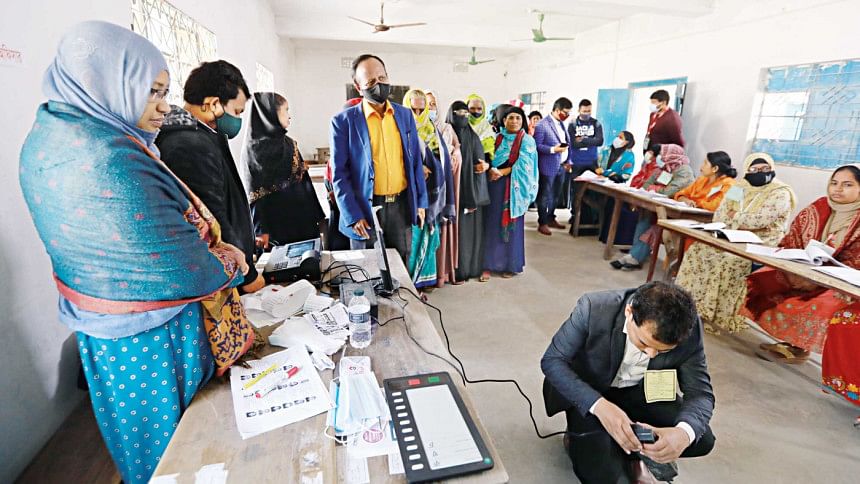
With the next parliamentary elections just one and a half years away, fresh debates over using the electronic voting machine in polls have taken the centre stage in the political arena of late.
Amid mistrust of opposition political parties in the system, information technology experts are now coming up with different views on whether the EVM is "tamper-proof".
Some said its manipulation is almost impossible while others think it is very easy for those who have control over the software "to influence the election results".
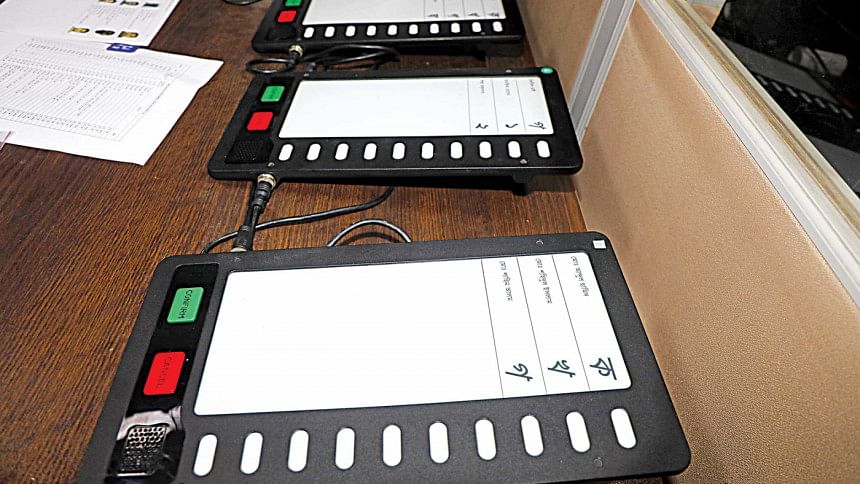
After attending a views-exchange programme on the EVM with the Election Commission on May 25, Muhammed Zafar Iqbal, noted writer and former professor at Shahjalal University of Science and Technology, said, "I am convinced that this machine is nearly perfect and it is easy to operate …"
He added, "I have seen in newspapers that political parties are making various demands, including formation of a new commission. I will tell the political parties that if you get a new commission formed, I will still request it to use this EVM. This will benefit you.
"So far, there is no scope for manipulating the machine. For manipulating a machine, you will need to reach a level that is impossible to reach."
When a reporter asked Prof Zafar Iqbal if there was a scope for anyone to tamper with the machine, he said, "I would request those who are saying this to make a specific complaint…"
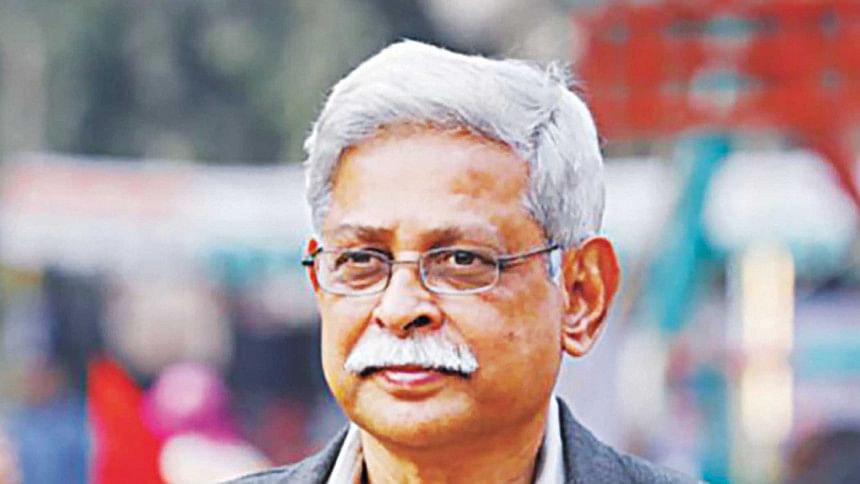
This comparison is very offensive. Bangladesh is ahead in many things than many other countries -- for example the biometric NID. So why should we compare?
Asked whether the Voter Verified Paper Audit Trail (VVPAT) should be added to the devices, he said such an addition would create more hassles.
VVPAT is a system which dispenses a slip with the symbol of the party for which an individual has voted.
Asked by The Daily Star about the possibility of software manipulation, Prof Zafar Iqbal on Wednesday said there was nothing to load in the software; rather, everything will be loaded in the read-only memory (ROM).
"When the information will be uploaded in the ROM, people can see it," he said, adding there must be consensus among all political parties before introduction of EVM in the election.
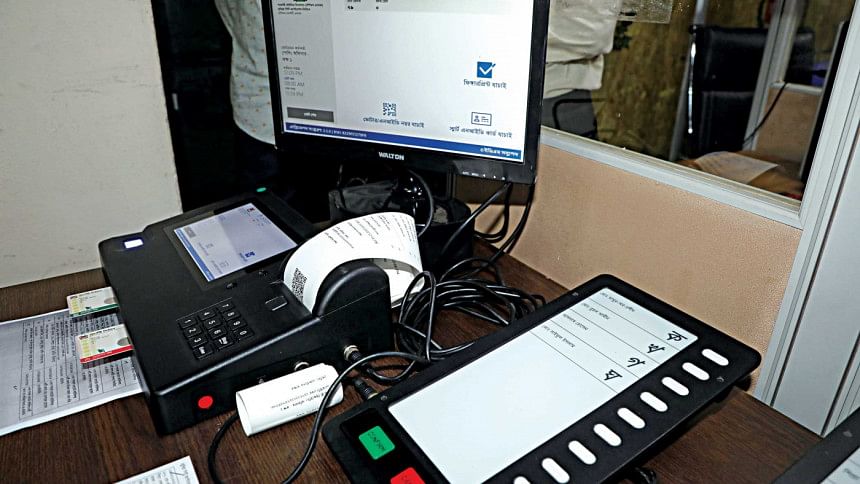
When told that many developed countries abandoned the system, he said, "This comparison is very offensive. Bangladesh is ahead in many things than many other countries -- for example the biometric NID. So why should we compare?"
Mohammad Kaykobad, distinguished professor at Brac University's computer science and engineering department, said it's tough to have 100 percent trust in a machine.
"But the machine has been customised in such a way that its manipulation is almost impossible," he told reporters after the EC programme.
Prof Aloke Kumar Saha of University of Asia Pacific's CSE department echoed this view while talking to this newspaper after the event. "EVM is a standalone machine without an internet connection. It is not possible to manipulate it," he said.
But Saifur Rahman, senior IT specialist of the Australian Public Service and a certified professional of the Australian Computer Society, has something different to say.
Basically, there are two parts in the EVM. One is hardware, including motherboard and microprocessors, second part is software that includes operating system, device driver, files and computer applications.
"Since the results of the election depend on the software used in the EVM, it is very easy for the person who will control this part to influence the outcome of the election," he wrote in an article run by The Daily Star.
The EVM used in Bangladesh is not connected to the internet. Therefore, many people think that it is impossible to manipulate the device virtually. This idea is wrong.
For example, it is possible to control an EVM from a distance by secretly installing mobile SIM-like IC (Integrated Circuit) inside the device, he wrote.
Moreover, it is not difficult to distort the result of the vote by inserting malware (malware-molecular code) into the device through any input port connected to the EVM. "The place where the voter ID card is scanned is one such input port," he explained.
Contacted again on May 29, Aloke Kumar Saha said, "It is not possible to manipulate the machine but there is a chance of manipulation at the software level by highly expert software engineers."
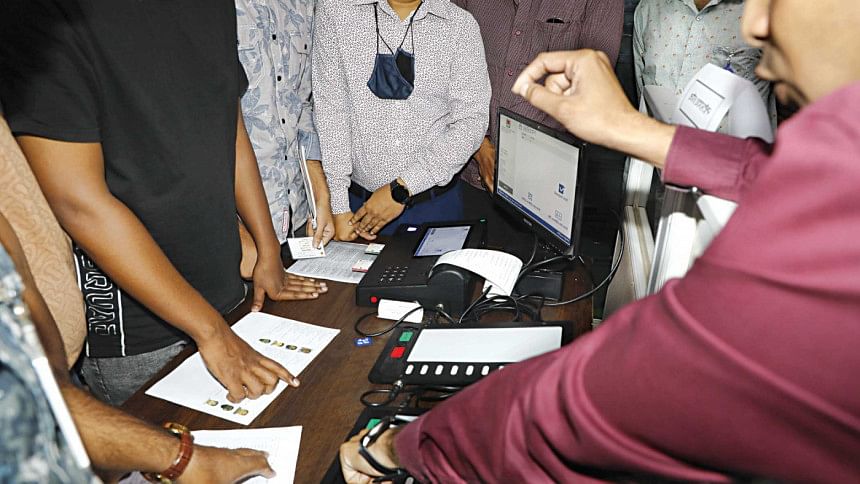
Asked about the issue, Election Commissioner Brigadier General (retd) Ahsan Habib Khan said, "We would allow people to examine the system. Let them come and prove it. If there is anything wrong with the EVM, we can improve it."
The debate over EVM surfaced again after Prime Minister Sheikh Hasina, also the ruling Awami League chief, at an AL Central Working Committee meeting on May 7 said the voting machines would be used in all 300 parliamentary constituencies during the next general polls, according to insiders.
Political and election commentators view these statements from the AL top brass as a pressure on the EC, the sole authority to decide on the matter. Such an announcement would worsen the existing mistrust which, political experts said, would be an obstacle to holding a free, fair and inclusive election.
"Whether EVMs will be used or not in the polls is at the absolute discretion of the Election Commission. But the Commission is now under pressure as the Awami League said it wants EVMs in all parliamentary seats," Brig Gen (retd) Sakhawat Hussain, a former election commissioner, told this newspaper on May 10.
Despite having the full mandate for making such decisions, the Commission now has to walk a tightrope, he added.
The BNP has long been opposing the use of EVMs, saying the devices would allow the ruling party to "steal votes".
A number of civil society members and eminent citizens in recent talks organised by the EC also advised against using EVMs unless there is a national consensus.
Chief Election Commissioner Kazi Habibul Awal on subsequent occasions said the EC was yet to make a final decision regarding the use of EVMs in the next general election.
The CEC and election commissioners said the Commission does not have the capacity to use EVMs in all 300 seats right now.
EVM Project Director Colonel Syed Rakibul Hasan said currently they have around 1.5 lakh EVMs. "We will need about 4.5 lakh machines for holding elections using this technology in all 300 seats."
Ahsan Habib Khan said as part of earning trust of all political parties, the EC will also sit with experts nominated by political parties to discuss the EVM issue.
In Bangladesh, EVM was used for the first time, as an experiment, in 2010 at 14 polling centres of a ward during the Chattogram City Corporation polls.
The last Election Commission led by KM Nurul Huda held talks with various stakeholders -- many of them were against using the system in the polls.
According to media reports, countries like Namibia, Nepal, Armenia, Bangladesh, Bhutan, Australia, Belgium, Bulgaria, Italy, Switzerland, Canada, Mexico, Argentina, Brazil, Chile, Peru and Venezuela, besides the US, use some forms of electronic voting.
On the other hand, in October 2006, the Netherlands banned the use of EVMs. In 2009, the Republic of Ireland declared a moratorium on their use. Italy has followed suit.
In March 2009, the Supreme Court of Germany ruled that voting through EVM was unconstitutional, observing that transparency is a constitutional right but efficiency is not a constitutionally protected value. Norway has stopped using it since 2003.
Pakistan, the UK and France once used it but these countries have stopped using voting machines as well.


 For all latest news, follow The Daily Star's Google News channel.
For all latest news, follow The Daily Star's Google News channel. 







Comments